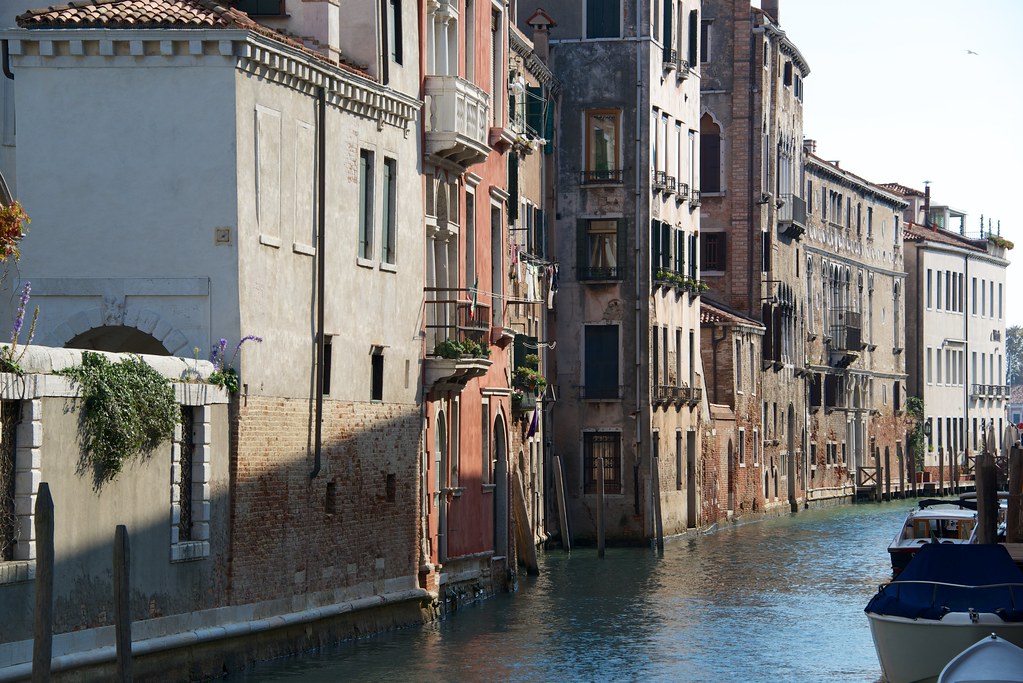- BM #: 1948-64-119
- Place Acquired: Venice, Italy (45°26’13.67″ N 12°19’57.54″ E)
- Date Acquired: February 1887
- Material: Stone
Reeve acquired the Stones from the interior of the Lion’s Mouth letterboxes during a period of great international travel to Venice or the “floating city.” These stones are symbols of Venetian political and social strife during the early 14th century.
Reeve visited Venice in the 1880s along with many wealthy Europeans and Americans. Venice became a popular tourist destination during this time due to its unique physical environment and history as an Italian trading superpower. Venice became well known throughout the world with many artifacts being taken out of Italy and spread throughout Europe and the Americas. Artifacts similar to the stones Reeve collected were being circulated throughout the world as international travel became more popular.
The city of Venice is located on the Northeastern coast of Italy. Due to its close proximity to the coast, the city is famous for the flooding of its streets. Given the nickname, “the floating city,” many of Venice’s streets are covered in water and require gondolas or small man powered boats to get around. Venice has been a city on the Italian peninsula since the 6th century CE and because of this has a vast political history. It was during the early 14th century that the Council of Ten was set up by Doge Pietro Gradenigo, the Head of State (Blue Guide: Venice, 2007, p380). The Council of Ten was originally introduced as a temporary group that would investigate treason within the Venetian government and put down any political or social upheavals caused by the public. In 1455, the Council became the permanent spy and intelligence agency. They ultimately remained the main political body until 1797 (Britannica, 2020).
The 14th century in Venice was one of great political tension as new groups came into power, such as the Council of Ten. Soon both the actions and words of the Venetian public were severely restricted. Those that opposed the Venetian government could be reported to the government for punishment through letterboxes. At first reports could be done anonymously, but as the Council gained more power witnesses had to give their names when reporting another citizen (FCPA. 2018). The letterboxes were used to maintain public order and were scattered throughout the streets of Venice. Large lions heads were carved into the city walls or into large pieces of stone and inserted within the city walls. People could literally put letters into the mouths of the lions anonymously giving up the names of citizens that committed espionage or treason.
Lion’s Mouths letterboxes were carved pieces of stone that were made to look like lions. The mouths of the lions were open to allow people to insert letters into them. The canister Reeve brought back from Venice contained three different sized and colored stones. There are two smaller stones that appear grey or darker in color and one larger stone that is much lighter. The Lion’s Mouth letterboxes are found throughout the city of Venice between the 14th and 18th centuries (1310-1797) and are synonymous with Venice’s “reign of terror.”



For Further Reading:
- Sotheby’s. 2016. “Into the Lions’ Mouth: The Dark Truth Behind Venice’s Secret Postboxes.” https://www.venicesothebysrealty.com/lions-mouth-dark-truth-behind-venices-secret-postboxes/
- Ferraro, Joanne M. 2012. Venice: History of the Floating City. Cambridge University Press.
- Simmel, Georg. “Venice.” Theory, Culture & Society 24, no. 7-8 (2007): 42-46.
- Britannica. 2020. “Council of Ten: Venetian Political Organization.” Encyclopedia Britannica, Inc. https://www.britannica.com/topic/Council-of-Ten-Venetian-political-organization.
- Macadam, Alta. 2007. Blue Guide: Venice. London: Blue Guides Limited. Eighth edition.
- FCPA Compliance & Ethics. 2018. “Compliance Lessons From Venice: How the Lion’s Mouth Informs Your Internal Reporting.” http://fcpacompliancereport.com/2018/11/compliance-lessons-venice-lions-mouth-informs-hotline/

